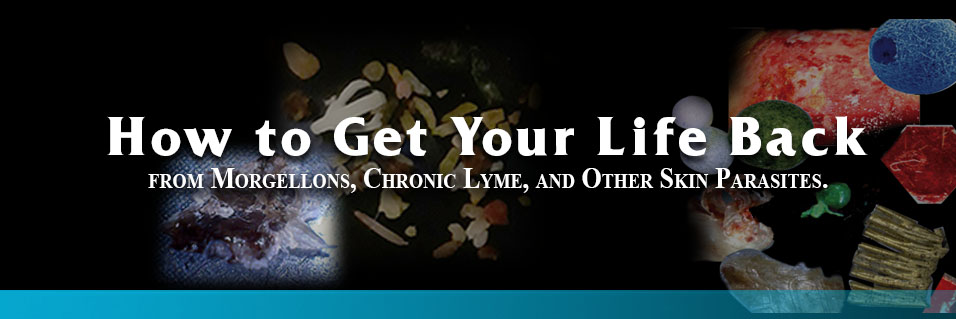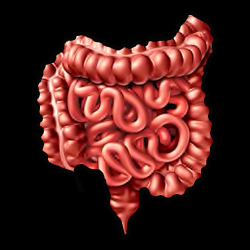Recovery from Morgellons is often complicated by three types of parasites as explained in blog post "The Different Types of Parasites that Affect Morgellons Disease" 1/5/19:
1) Protozoa - a single-celled heterotrophic eukaryotes.
2) Helminths typically known as nematodes- pin worms, round worms, flat worms, tape worms...
3) Ectoparasites (organisms such as mites and Collembola that infest the skin.
Protozoa and helminths mostly affect the gut, while ectoparasites include lice and mites that can live on and burrow into the skin, staying there for long periods of time.
This update is about helminths (nematodes) - generally intestinal parasites.
Do you have intestinal parasites? In a recent blog post, Antibiotics for Lyme and Morgellons Disease, a Q&A video by Dr. Todd Watt and Dr. Jay Davidson ,they claim that if you have a heart beat you have internal parasites. When treating patients, their first step in treating or dealing with any disease is to get rid of internal parasites.
Dewormers used often have worm wood and black walnut. Unfortunately, both feed Collembola. From looking at many hundreds of questionnaires, roughly 80% of all Morgellons sufferers are dealing with Collembola.
When I look at the co-factors of Morgellons that complicate or inhibit getting your life back, there are three basic Public Enemies.
1. Public Enemy #1 are the various co-infections of fungal organisms - Candida Albicans, skin fungus, mold, and other internal fungal organism.
2. Public Enemy #2 are the various helminths (nematodes)
3. Public Enemy #3 is Collembola.
How do you know if you have helminths? Answer: If you are human, you do. You pick them up walking bare foot outside, swimming in rivers and pools, from eating infected foods, and so on. They can often become life threatening, but more often they just sap your energy. However, with Morgellons, they often become an important factor with which to deal.
Several symptoms associated with Morgellons and Strongyloides:
1. Abdominal bloating and discomfort.
2. Fatigue
3. Rashes - sometimes a symptom of Strongloides
However, all three of the above symptoms can be from internal parasites such as pin worms, round worms, hook worms, tape worms and so on. For more information read Signs Your Body Is Full of Parasites.
Other symptoms are:
• Anemia
• Appetite/Satiety Changes
• Bruxism
• Digestive Woes
• Joint and Muscle Pain - also associated with Lyme disease
• Past Food Poisoning
• Skin Issues - looks like Morgellons, mites, and Collembola just love nematodes.
• Sleep Problems
• Traveler’s Diarrhea
Morgellons, Collembola, and Stronglyoides, invite these co infections of internal parasites. Likewise for Lyme disease. For this reason, cleansing of your digestive and intestinal track is an important part of my protocol for Morgellons, Chronic Lyme, Collembola, Mites, and Collembola.
There are many dewormers available on the market and most of them are fairly expensive. Popular one contain black walnut and wormwood which are OK if you're only dealing with Morgellons, however, since as I noted before about 80% of those dealing with Morgellons also are dealing with Collembola, wormwood and black walnut feed Collembola.
My protocol to deal with helminths is
1. Diatomaceous earth--more information in a previous blog post, DE vs Bentonite Clay Morgellons Treatment. Typically one teaspoon twice daily in glass of water on empty stomach.
2. Consuming our Nature's Gift Mouth Wash - Read "Mouthwash Just Might Be So Much More" It is our top selling supplement.
3. Fenbendazole - Typically a pet medication ordered from our lufenuron supplier. Of the six options on the page, Dr. Luna suggests 24 capsules of the 444 mg size. He recommends taking one cap a day for three days and then four days off. You could order more, but he believes 24 caps is sufficient.
Science Direct states, "Fenbendazole is an anthelmintic used to treat common helminth infections, including ascarids, hookworms, whipworms, and a single species of tapeworm, Taenia pisiformis. Giardia spp. are also considered susceptible to fenbendazole. Fenbendazole binds beta-tubulin subunits of microtubules, interfering with their polymerization.
Side effects include vomiting and diarrhea, although both are considered rare."
Typically, it's far more likely that by using any of the three above it's more likely that detox reactions may be experienced. Anyone on this protocol or any dewormer should be prepared for detox reactions by having on hand the substance or supplements specified in blog post "Diminishing Detox Reactions from Morgellons Using Enzymes, Amino Acids, and Zeolite" 3/1/2020
For tape worm species other than Taenia pisiformis, Dr. Luna who provides us with lufenuron, suggest Praziquante is the med that works. If you suspect an infection of tape works, read Very Well Health's article, How a Tape Worm Infection is Diagnosed.
|



